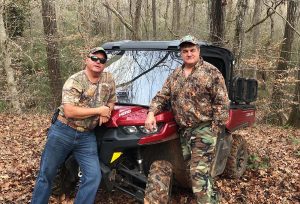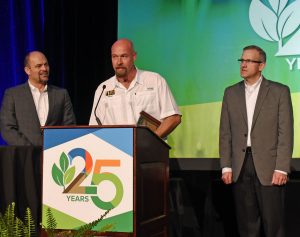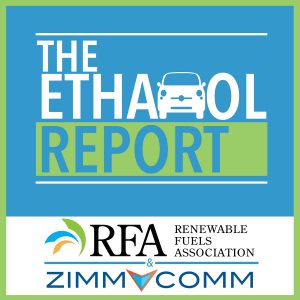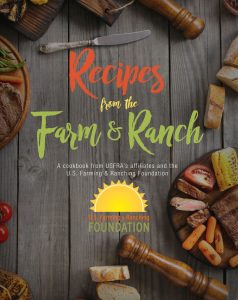-
 NRGene, the worldwide leader in genomic assembly and analysis, is working with a team of researchers from Wageningen University & Research (WUR) in the Netherlands and leading commercial partners to create multi-genome mapping of commercial food potatoes. The potato genome is complex. It’s an auto-tetraploid, which means that each potato cell contains four nearly identical copies of each chromosome and gene, making the assembly and phasing of the four copies extremely difficult for traditional technologies. NRGene has completed the phased assembly of three commercial potato varieties.
NRGene, the worldwide leader in genomic assembly and analysis, is working with a team of researchers from Wageningen University & Research (WUR) in the Netherlands and leading commercial partners to create multi-genome mapping of commercial food potatoes. The potato genome is complex. It’s an auto-tetraploid, which means that each potato cell contains four nearly identical copies of each chromosome and gene, making the assembly and phasing of the four copies extremely difficult for traditional technologies. NRGene has completed the phased assembly of three commercial potato varieties.
2017 Deer Hunt – Can-Am Defender – Episode 2
 Hello and welcome from the Crystal Pig Hunt Club (CPHC). It’s time for another episode of hunting with a Can-Am Defender.
Hello and welcome from the Crystal Pig Hunt Club (CPHC). It’s time for another episode of hunting with a Can-Am Defender.
In this episode my brother Paul and I talk about our experience using the utility vehicle in the woods while deer hunting. You’ll hear nothing but praise for this well thought out vehicle which makes it very comfortable to get from camp to the stands and back. Popping in at the end is Paul’s son Joe who has been successfully hunting with us and also helped serve as videographer when called on.
You can see photos of the Can-Am in the wild here: 2017 Deer Hunt – Can-Am Defender Photo Album
Animal Ag Bites 12/26
-
 Novus International, Inc. has smashed its previous records and raised $252,987 for the United Way. Novus was able to support the United Way through a combination of employee donations, business partner sponsorships and company matching. As part of its effort to cultivate sustainable people, Novus matches causes and charities of significance for its employees dollar-for-dollar. This year, Novus employees across North America including its Missouri, Arkansas and Texas offices and field employees raised more than $125,000 which was matched with company funds.
Novus International, Inc. has smashed its previous records and raised $252,987 for the United Way. Novus was able to support the United Way through a combination of employee donations, business partner sponsorships and company matching. As part of its effort to cultivate sustainable people, Novus matches causes and charities of significance for its employees dollar-for-dollar. This year, Novus employees across North America including its Missouri, Arkansas and Texas offices and field employees raised more than $125,000 which was matched with company funds. - Registration is now open for the Animal Agriculture Alliance‘s 2018 Stakeholders Summit, themed Protect Your Roots. The event will be held May 3-4 at the Renaissance Capital View Hotel in Arlington, Va. Find registration details here.
- Is the feeder cattle contract still viable and how can the market volatility be managed? These are the main questions in a new Feeder Cattle Basis report from the RaboResearch Food & Agribusiness group. The CME Index is comprised of 12 states, and the Rabobank analysts explore the need for regionalization for a more accurate picture of the Feeder Cattle Basis and Market.
- The Cattlemen’s Beef Promotion & Research Board has named Scott Stuart of Colorado as the new chief executive officer, effective February 1, 2018. Stuart has an extensive background in the livestock industry, including board management and as a contractor to the beef board. He currently serves as the President and CEO of the National Livestock Producers Association.
- Agriculture Secretary Sonny Perdue has announced the appointment of 27 members to the Cattlemen’s Beef Promotion & Research Board. A list of board members is available on the AMS Cattlemen’s Beef Board webpage.
- The 2018 AQHA Convention is March 2-5, 2018, in Jacksonville, Florida. Visit aqha.com/convention for more information.
- Registration for the American Meat Science Association’s 71st RMC is now open. The event will be held in Kansas City June 24-27, 2018. More information regarding the technical program, schedule of events, registration fees, hotels and more is posted at meatscience.org/rmc.
ARA Honors AGCO Operator of the Year
 The 2017 Operator of the Year, sponsored by AGCO Corporation, Andrew Myburgh of Aberdeen, South Dakota, was honored at the recent Agriculture Retailers Association (ARA) annual meeting in Phoenix, Arizona.
The 2017 Operator of the Year, sponsored by AGCO Corporation, Andrew Myburgh of Aberdeen, South Dakota, was honored at the recent Agriculture Retailers Association (ARA) annual meeting in Phoenix, Arizona.
Originally from South Africa, Myburgh is a Certified Applicator at the Wheat Growers in Aberdeen, where he treats 40,000 acres of fields and is often requested by name. Now a permanent resident of the U.S., he lives on a small farm with two sons, where they care for a variety of animals. He is involved in the community by coaching a local soccer team and training other applicators in his trade.
Myburgh won a Harley-Davidson motorcycle for being chosen as this year’s winners out of more than 40 applicators who were nominated.
Listen to Andrew Myburgh accepting the award here: AGCO Operator of the Year Andrew Myburgh
Ethanol Report on RFS2 10th Anniversary
 Ten years ago this month, just days before Christmas, President George W. Bush signed into law the Energy Independence and Security Act which greatly expanded the Renewable Fuel Standard (RFS) to include up to 36 billion gallons of biofuels by 2022.
Ten years ago this month, just days before Christmas, President George W. Bush signed into law the Energy Independence and Security Act which greatly expanded the Renewable Fuel Standard (RFS) to include up to 36 billion gallons of biofuels by 2022.
The expansion became known as RFS2, like the sequel to a big movie that had just been released two years before. But unlike most movie sequels, the RFS2 has proven to be even better than the original and a success by any measure, according to a new analysis by the Renewable Fuels Association (RFA), “The RFS2: Then and Now.”
In this edition of The Ethanol Report podcast, we flashback to the promises of President Bush at the signing, and RFA CEO Bob Dinneen talks about how the 2007 Christmas gift has kept on giving for a decade.
Listen to it here: Ethanol Report 12-21-17
Last Minute Gift Ideas from USFRA
 If you are looking for last minute gift ideas, the U.S. Farming and Ranching Foundation may have the answer.
If you are looking for last minute gift ideas, the U.S. Farming and Ranching Foundation may have the answer.
The foundation is a nonprofit organization associated with the U.S. Farmers and Ranchers Alliance (USFRA) with the mission of supporting sustainability and consumer education in American culture. And it is the way that individuals can donate to support that cause by making a simple donation or by buying an e-cookbook to contribute.
“Recipes from the Farm and Ranch” is an e-cookbook featuring 40 recipes from USFRA affiliates and industry partners like Good Ole Country Dressing from Texas Farm Bureau, Midwest Pork Tenderloin from Iowa Pork Producers Association, and Best Breakfast Banana Bread from the Maryland Grain Producers Utilization Board. The cookbook is only $9.99 from Blurb.com, and can be downloaded immediately for viewing on Amazon Kindle Fire, Apple iPad, Android devices, and Mac or PC computers.
USFRA CEO Randy Krotz talks about how the cookbook was developed and how the foundation helps support the mission of the alliance. Interview with USFRA CEO Randy Krotz
Zimfo Bytes 12/22
-
- Ninety-nine percent of U.S. farms are family farms, and they accounted for 90 percent of farm production in 2016, according to America’s Diverse Family Farms – 2017 Edition. Farming is still overwhelmingly comprised of family businesses. More than a third of farms have multiple operators, and larger farms are more likely to have multiple generations of farm operators. Farm households in general are not low income when compared with all U.S. households. This report provides an overview of U.S. farms, including the latest statistics on production, financial performance, and farm household characteristics by farm size categories.
- Beck Ag, Inc. is expanding its client solutions and optimization teams with the hiring of Melinda Oberly and Srikanth (Sonny) Dasari. Oberly joins Beck Ag from the National Association of Farm Broadcasting (NAFB) and will serve in the role of Account Partner. Following 16 years in the software development arena, Dasari joins as Beck Ag’s Intelligence Solutions Architect.
- Illinois-based FarmWeek, FarmWeekNow.com and the RFD Radio Network announce three new additions and one promotion to its advertising sales team led by Steven Peters, advertising sales manager. Joining Peters are Nan Fannin, advertising business manager; Jamie Deffenbaugh, advertising sales representative; and Jessica Wells, advertising sales assistant.
- Swanson Russell recently promoted three people in its Lincoln office: Brittany Lentz, Jeff Salem and Neale Stadler. Lentz was promoted to account manager. Salem was promoted to senior public relations counsel, and Stadler was promoted to account manager.
- Agriculture Secretary Sonny Perdue has announced the appointment of 27 members to the Cattlemen’s Beef Promotion and Research Board. A list of board members is available on the AMS Cattlemen’s Beef Board webpage.
Seasons Greetings from IFAJ
 This greeting comes to you from the International Federation of Agricultural Journalists (IFAJ).
This greeting comes to you from the International Federation of Agricultural Journalists (IFAJ).
Best wishes to all IFAJ members for a warm holiday season and a peaceful and prosperous 2018.
Thank you for your vital work in helping farmers feed their families, their communities and the world.
Best Regards,
Owen Roberts
President, IFAJ
GROWMARK Reports 2017 Numbers, Names Directors
GROWMARK reported $7.3 billion in sales for fiscal year 2017, up from $7.0 billion in 2016. The company shows a pretax income of $91 million, down from $116 million the previous year.
“The fiscal year was not without its challenges, with economic conditions putting continued pressure on farm net incomes,” said GROWMARK CEO Jim Spradlin. “Warm winter weather lowered demand for home heat, and the challenges of Hurricane Harvey on the energy supply chain impacted energy results. Crop Nutrients endured a devaluation of nitrogen products during the peak spring season. Crop Protection and Seed had record or near record results. Retail Supplies and Grain had improved operations year-over-year.”
The company distributed estimated patronage refunds of $59 million to its members in a combination of cash and stock, followed by stock redemption. Highlights included record chemical sales in the Crop Protection and Crop Nutrients Divisions, record-high bushel volume and improved earning compared to 2016 reported by Retail Grain Units, higher sales volumes in the Energy Division compared to the previous year, and an uptick in soybean seed sales. Corn sales were down slightly compared to 2016.
GROWMARK has also added two new faces to its Board of Directors. Brian Hora of Ainsworth, Iowa, operates a 650-acre corn and soybean farm and has served as a director of AGRILAND FS since 2000. Andy Jones operates a 2,100-acre cash grain enterprise in Bloomdale, Ohio. He currently serves as chairman of the board at Legacy Farmers Cooperative, an FS company based in Findlay, Ohio.




